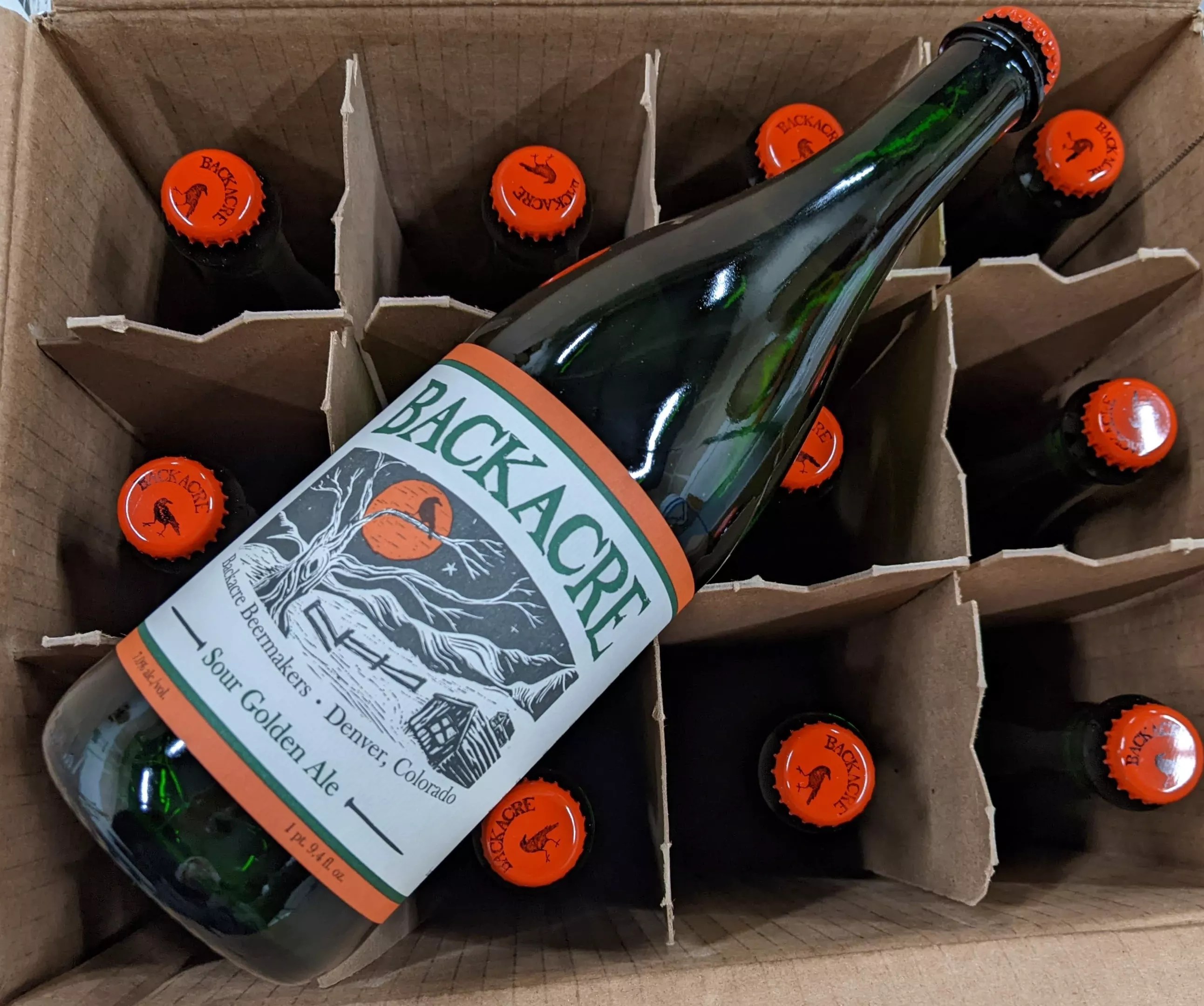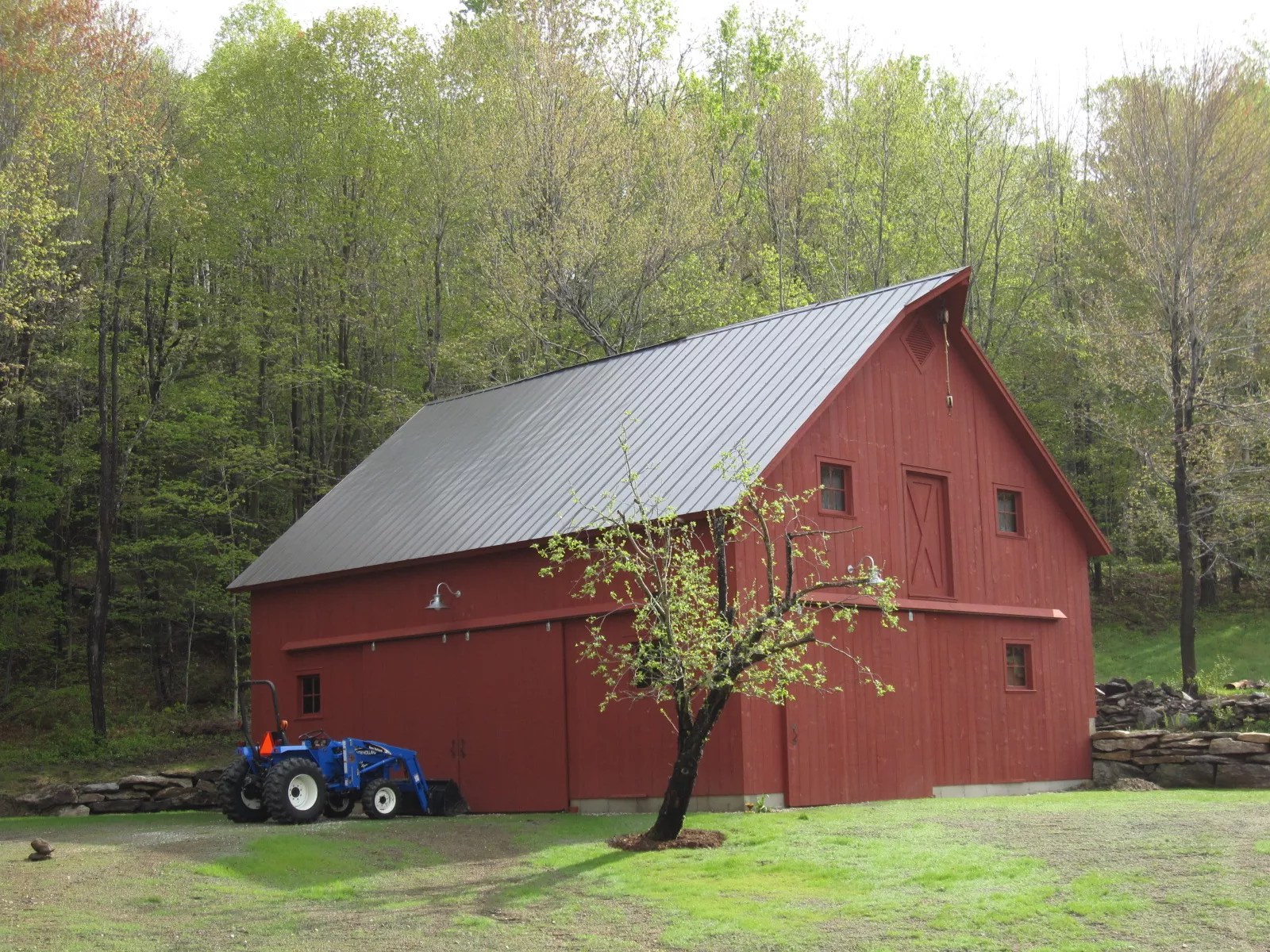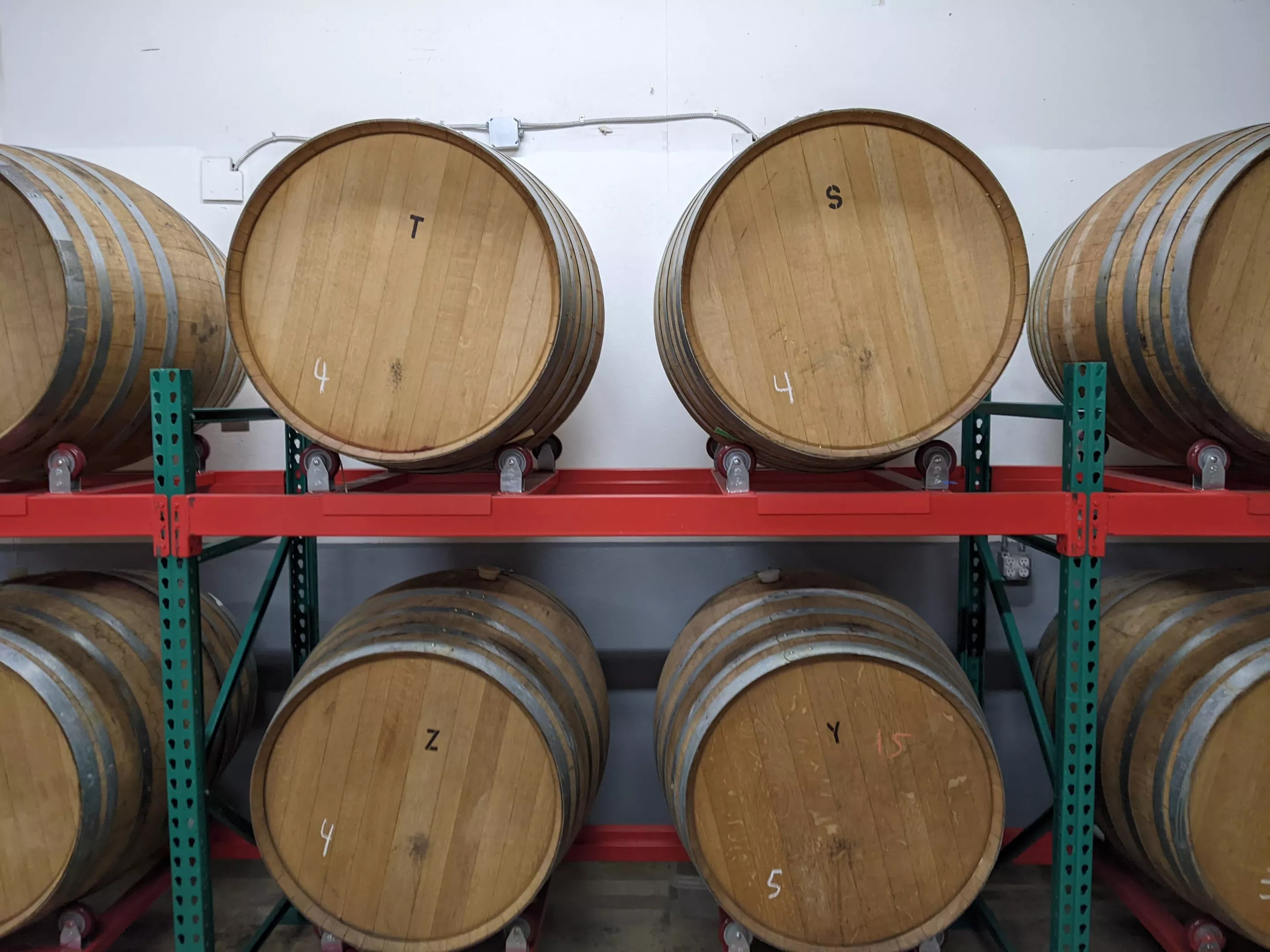
Backacre Beermakers

Audio By Carbonatix
There’s a brewery in the Mile High that only makes a single beer, and you can count on it remaining that way for some time.
Nestled in the warehouses of north Denver, Backacre Beermakers typically releases a new batch of beer once or twice a year. The latest batch, number 16, is now available in a select list of local restaurants, bars and liquor stores.
“We really want to sell it locally, but we’ll definitely send some shipments out east,” says co-owner Erin Donovan, who founded Backacre in her father’s barn in Vermont in 2010 with her husband, Matt Baumgart, before moving it to Denver two years ago.
Backacre doesn’t have its own brewery. The process of making the beer starts just a few miles down the road, at Bierstadt Lagerhaus. “It’s very much inspired by Hanssens Artisanaal,” says Baumgart, referring to a 150-year-old blender of spontaneous beer in Belgium. He adds that Hanssens is family owned, and a visit there inspired the couple.
“They only do it on the weekends,” says Donovan. “They have their house, a barn next door, and it’s full of barrels. And we were like, maybe we can do this ourselves on that kind of scale.”

The original blendery was in a barn in Vermont.
Backacre Beermakers
At Bierstadt, the batch for Backacre is roughly 700 gallons. After the unfermented beer, called wort, is finished boiling, it’s pumped into totes and trucked over to Backacre, where it’s put into a blending tank before being transferred into large wooden barrels called puncheons, which hold about 132 gallons – a little over twice the size of a wine barrel.
Like at Hanssens, the process is very hands-on. Hanssens relies on gravity – its barrels are in the attic – while Backacre relies on custom casters to maneuver its barrels (a forklift is rented on occasion, however).
To ferment the beer in the barrels, Backacre adds additional yeast, though the yeast inside the barrels is a factor as well. The original yeast strain was a combination of the couple’s favorite varieties. They would home-brew beer and then dose the results with a variety of strains. “We were doing blind tastings,” says Baumgart. “Sort of tournaments, and we would figure out which ones we would like [and keep those around].”
The team often brought in close friend and industry veteran Andy Parker for those tastings, and even received a yeast strain from him that made the final cut. To this day, the team chooses its favorite barrels and spikes new barrels with the slightly different, preferred strain. The contents of each barrel are related, as the yeast has the same origin, but it’s like branches on a tree – moving in different directions, yet still part of the same base.
The beer then matures for anywhere from six months to four years before Donovan leads barrel selection and blending, and the team, with the help of volunteers, bottles up the beer. At that point, the beer is naturally conditioned, taking several months to reach full carbonation in the bottle and spending several more months developing until Donovan and Baumgart feel that it’s ready to be sold.

The beer ages for up to four years in 132-gallon puncheon barrels.
Backacre Beermakers
The result isn’t your typical golden sour. “It sort of mixes elements of a gueuze, tripel and saison,” says Baumgart. Most sour ales utilize hops more as a preservative, but Backacre wants some bitterness to balance the other flavors of the beer, along with a slight flavor component from the hops.
A recent sampling of batch 16 next to batch 15 revealed some of the striking differences that happen between batches, as well as with age. Batch fifteen has more mellow flavors, with funky, farmhouse notes leading the way. Batch 16 has a fresh malt component that balances that same funk.
Batch 16 is the second batch made in Colorado, after Donovan and Baumgart decided it made more sense to bring the production to Denver, where they live with their children. The move has allowed Donovan, a former immunologist, to be more hands-on with the beer, as she’s able to sample it more regularly.
Donovan and Baumgart are very aware of their own individual preferences. At blending, they take into account the subjectivity of their palates and try to strike a balance. “We know that I’m sensitive to certain flavors,” says Baumgart. “Erin is sensitive to others. We’re ultimately trying to make something that we both like.”
The team has learned a lot along the way. Early batches were made in smaller barrels, which, because of a larger surface area as well as smaller wooden staves, let more oxygen into the beer. That can have a negative impact on the final product. Donovan estimates that they would dump one in every five barrels early on. Now, with the larger barrels and a regular topping-off liquid to counter evaporation, Backacre sees less beer fail to live up to its high standards.
Being dedicated to producing one beer is pretty much the antithesis of the American beer market, but as a small, singular-focused brewery, Backacre is able to handle changes in demand with ease. There is no expensive equipment at the brewery – Baumgart and his father, both engineers, built an automatic bottler using pinch valves from the pharmaceutical industry. It helps the team bottle roughly 600 bottles per hour. It also has built-in safeguards, like an extra channel that can be commissioned if one of the working channels breaks.
“[The business] is a manageable size,” says Donovan.
“Maybe it’s like Orval,” Baumgart adds, referring to the legendary Belgian beer maker that distributes only one beer. “Orval sells, maybe not in a huge volume, but they make it and it sells at some rate, and they can weather any kind of market.”
Backacre can also weather unexpected challenges, like when Baumbart hurt his knee during a volleyball game, an injury that required three surgeries over the last eighteen months, delaying the release of batch 16 by several months.
Now that it’s out, there is one new development that the team is looking forward to. “We’re excited to have our beer on draft,” says Donovan. “Matt was saying that it’s basically just a bigger bottle, and the beer is the same blend.” Because the keg is naturally conditioned and the beer is carbonated to the same levels as the bottle (about two and a half volumes, which commercial draft systems can handle just fine), the flavor experience should be the same.
“Because we only make one beer, our focus is always the same. It’s to make this beer that we love,” Donovan concludes.